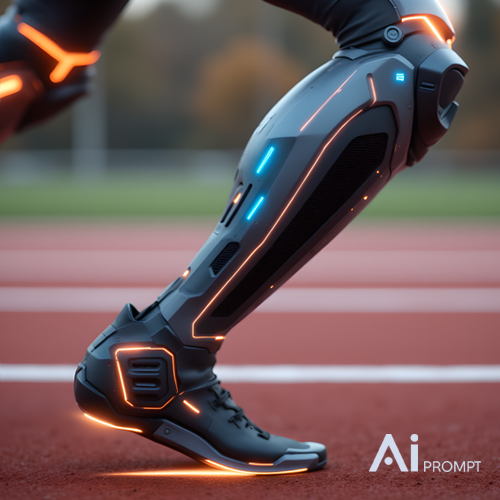Introduction: A New Era of Human Possibility
The boundary between human ability and technology is rapidly disappearing. With the rise of AI-powered prosthetics, 3D printing, and smart wearable devices, people with limb disabilities are no longer confined by physical limits. Instead, they are discovering new ways to enhance their performance and redefine what it means to be capable.
Today, prosthetic limbs have evolved beyond simple replacements. They are transforming into highly personalized tools of creativity, precision, and expression — capable of surpassing even natural human abilities.
From Restoration to Human Enhancement
In the past, prosthetics were designed only to restore basic movement such as walking or gripping. However, modern prosthetics go much further. They now combine AI algorithms, real-time motion sensors, and muscle-signal detection to respond intelligently to the user’s intent.
For example, a smart prosthetic hand can sense temperature, pressure, and texture, adjusting its grip automatically. Likewise, an advanced robotic leg can adapt its balance and stride on stairs or uneven ground. Consequently, these innovations are not merely replacing what was lost; they are expanding what humans can achieve.
Moreover, by learning from the user’s patterns, smart limbs continually improve their performance. This means each movement becomes smoother and more natural over time. As a result, users gain both physical freedom and psychological confidence.
3D Printing: The Revolution of Customization
At the heart of this transformation lies 3D printing technology. Unlike older prosthetics that were heavy and costly, 3D printing allows for lightweight, customized designs that perfectly match each person’s anatomy and lifestyle.
Furthermore, the process encourages creativity and professional specialization. Designers can create prosthetics that serve not only functional purposes but also artistic or occupational goals.
Examples of Specialized Prosthetics
-
🩺 The Surgeon’s Hand:
Imagine a prosthetic hand designed specifically for a surgeon. It includes ultra-precise motion control, tactile feedback, and micro-tools for delicate operations. Because of this precision, surgeons can perform procedures that demand steady hands and absolute focus. Therefore, the prosthetic becomes an extension of medical excellence, not just a replacement limb. -
🔧 The Engineer’s Hand:
Consider a prosthetic built for technical professionals such as mechanics or robotics engineers. It may include modular attachments, torque sensors, or even built-in screwdrivers. In this way, the prosthetic transforms into a specialized instrument, enhancing productivity and accuracy. -
🎨 The Artist’s Hand:
Now think of a prosthetic created for artists, sculptors, or designers. It can integrate fine motor control and digital brush connectivity to creative software. Consequently, the artist can sculpt, paint, or design in entirely new ways — pushing the boundaries of human expression.
Each example demonstrates how prosthetics are shifting from medical devices to profession-specific tools of empowerment.
Smart Wearable Integration: A Connected Ecosystem
Today’s prosthetics no longer operate alone. They are part of a smart wearable ecosystem that synchronizes seamlessly with devices like smartwatches, sensors, and neural interfaces.
For instance, a prosthetic arm can link to a smartwatch that tracks muscle fatigue, temperature, and heart rate. It can then adjust grip strength in real time to prevent strain. Similarly, a prosthetic leg connected to GPS may recommend energy-efficient walking routes.
Even more impressively, brain-computer interfaces (BCIs) now allow users to move their prosthetics through thought alone. As a result, the connection between mind, body, and machine grows stronger — forming a truly symbiotic relationship.
Ultimately, this integration turns the human body into a smart, adaptive system, capable of learning and evolving alongside technology.
The Beauty of Function: When Technology Becomes Art
Beyond function, today’s prosthetics are also beautiful works of art. Designers no longer try to hide them; instead, they showcase them. Using luxurious materials like polished titanium, carbon fiber, or jewel-like coatings, they create prosthetics that look as elegant as fine jewelry.
For example, some prosthetic arms feature glowing LED veins, while others include gold-plated joints or pearl inlays. Moreover, artists and engineers collaborate to produce visually stunning limbs that celebrate individuality.
Therefore, prosthetics become both a symbol of empowerment and self-expression. They merge technology, design, and identity in a way that inspires admiration rather than pity.
Redefining Disability and Human Identity
As these innovations progress, society faces a profound question: when prosthetics outperform natural limbs, what does “disability” really mean?
Rather than focusing on limitation, this new era focuses on capability and potential. People with smart prosthetics often perform tasks with greater precision, endurance, and creativity than before. Consequently, the line between “disabled” and “enhanced” continues to fade.
In this context, technology doesn’t just restore human ability — it redefines humanity itself.
Ethics, Inclusion, and the Future
Of course, these advancements bring ethical challenges. Should enhancement-level prosthetics be available to everyone, even those without disabilities? Could the future include elective limb upgrades for beauty or performance?
While these questions are complex, one thing remains clear: the collaboration between engineers, designers, medical experts, and ethicists will shape a future where enhancement and equality coexist.
Ultimately, this revolution is about more than technology. It’s about empowerment, dignity, and evolution.
A Future Without Limits
The rise of smart wearable prosthetics marks the beginning of a new chapter in human evolution. Through AI integration, 3D printing, and wearable technology, individuals with limb disabilities are no longer defined by what they’ve lost, but by how far they can go.
Therefore, the future of prosthetics isn’t about restoration — it’s about transformation.
Each innovation brings us closer to a world where the human body and technology work in perfect harmony, unlocking possibilities that once existed only in imagination.
This prototype and concept were created by aiprompt.media _ Reza Ferdowsian.

